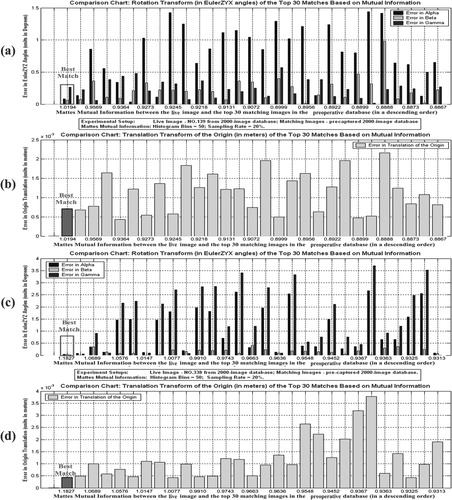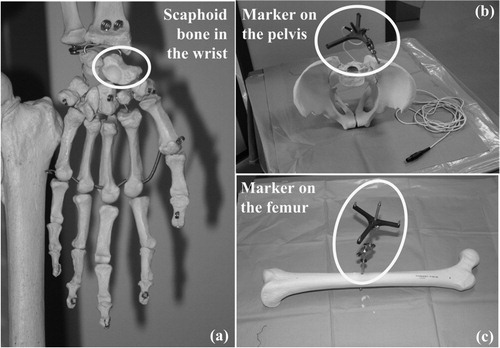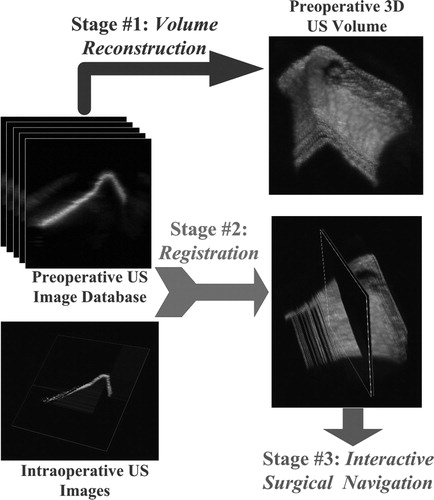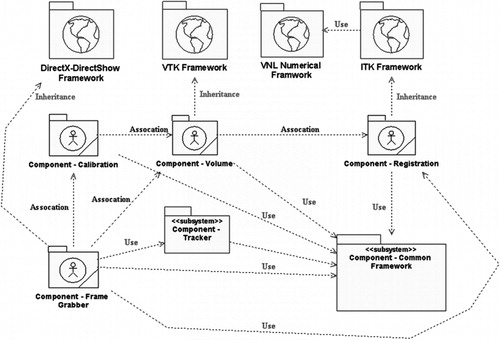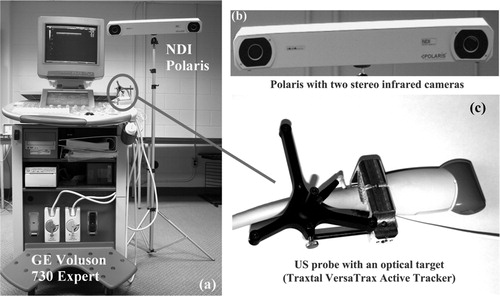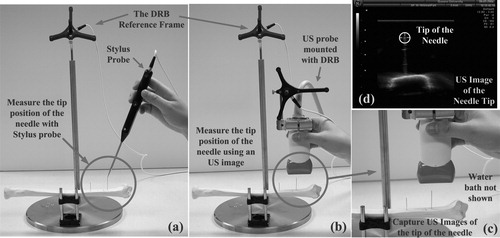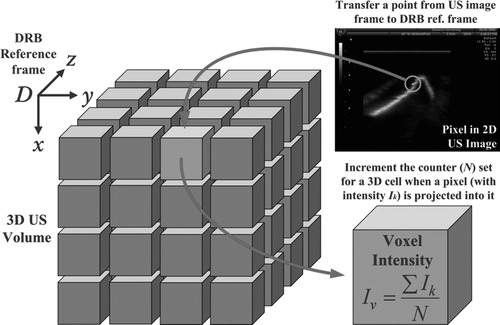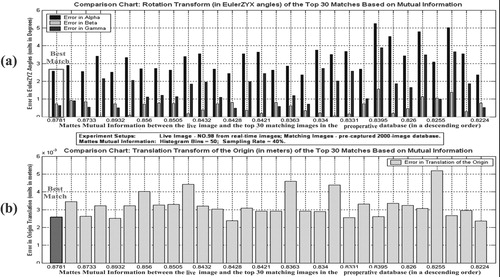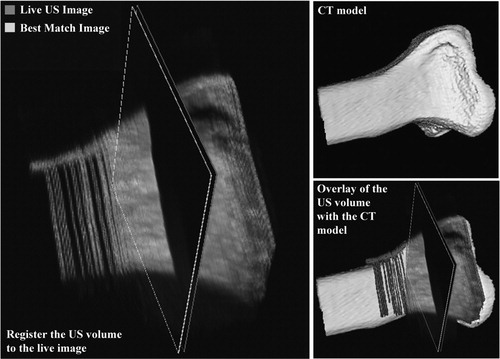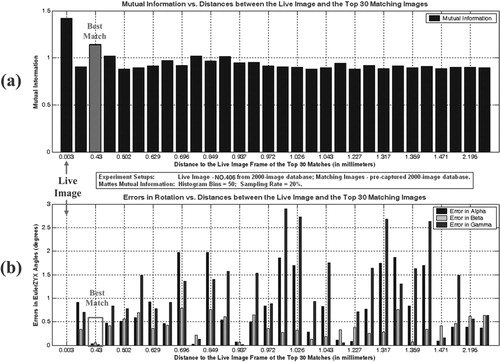Figures & data
Figure 5. Experimental setup. (a) A stainless steel mounting jig was built to image a radius-bone phantom in a water bath. (b) A wooden mounting brace was wrapped around the arm of a human subject using velcro pads.
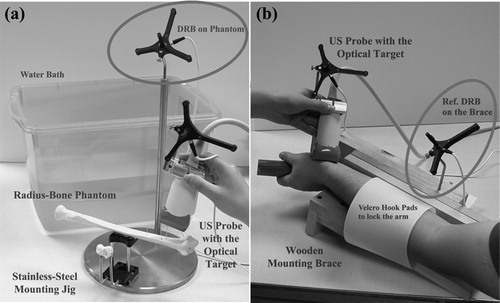
Figure 6. (a) The N-wire US probe calibration phantom. (b) A US image showing the cross-section of the N-wires.

Table 1. Validation of the US probe calibration result.
Figure 10. Registration results of Experiment Type I with live images randomly selected from the preoperative images: best matching results for one of the live images from the radius phantom (a and b) and the human subject (c and d) (color version available online).
